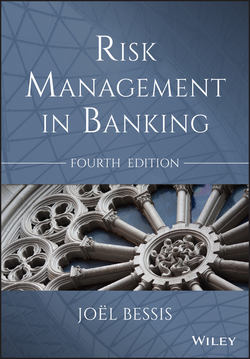Читать книгу Risk Management in Banking - Bessis Joël - Страница 5
На сайте Литреса книга снята с продажи.
PREFACE
ОглавлениеRisk management in banks became, and remained, a hot topic after the financial crisis. Addressing risk management in this context is challenging given that the magnitude of the crisis suggests that risk management was inefficient, that risk models were inadequate and that regulations failed to meet their goal of avoiding a major crisis. Indeed, it is ironic that the crisis started when the new Basel 2 regulations were enforced.
Risk management has made considerable progress, however, as the practices became more sophisticated and as the regulations put pressure on enhancing the resilience of banking firms. It has become a core management field in banking with a large concentration of resources dedicated to better identify, assess and control risks.
The book addresses risk management in three main core sections dedicated, respectively, to asset-liability management, market risk and credit risk. It has been largely inspired from the observation of gaps in the knowledge of the field of risk management in banks.
In business schools and other graduate programs, students are comfortable with corporate finance and capital markets, but much less so with the finance of financial firms. The financial management of banks has not much to do with the corporate finance of commercial and industrial firms. Still many would like to better understand the inside mechanisms of banks and many aim at developing themselves in banking careers. These students of finance do not need standard finance, but rather be acquainted with the specifics of the financial management of banks and the technicalities of risk management. This book is designed to address these needs.
Many professionals in banks perceive themselves as specialists of their own fields and feel that they need more background, conceptual and practical, on the expanding core area of risks. Furthermore, the usage of risk models remained in the hands of a relatively small group of “quants”. Experts are embedded in banks, but being embedded does not imply that expertise is shared. The financial literature is broad, specialized and often highly technical in the field of risks. For those professionals of finance who are not model specialists, navigating through the variety of contributions is a challenge. This text is designed to provide a balanced background in risk techniques. The main risk models are introduced through a number of examples that should shed some light where more theoretical texts cannot help.
The volume of literature on market risk and credit risk has grown considerably, but less so in the field of asset-liability management, of which coverage is relatively limited, notably for non-specialists of banks. However, asset-liability management is a core function in banking. It concentrates the financial issues of banks and the attention of regulators who impose new rules on the balance sheet structure of banks. The text provides the minimum background on the area that all students or managers interested in banking should be acquainted with.
In short, this text is designed to address all that is needed to know for students and practitioners to be comfortable with the field and able to navigate further in related areas by themselves, but not more.
This edition has been streamlined compared to previous editions, with a focus entirely on financial issues, and technical developments have been reduced to the minimum for making the text self-contained. Many of my former colleagues and professionals with whom I have had the chance of working in the risk departments of banks have contributed to this text as they shared their experience. All participants in risk management seminars have also helped by raising many excellent and challenging questions, which allowed to refine the approach of the book. They all deserve many thanks for the enrichments that they inspired to this text.
Joël Bessis
Professor of Finance at HEC Paris
